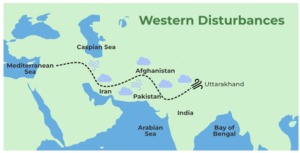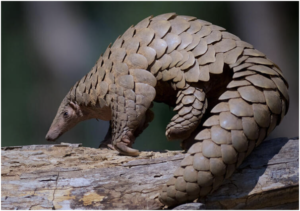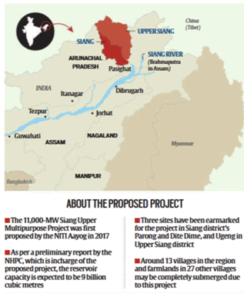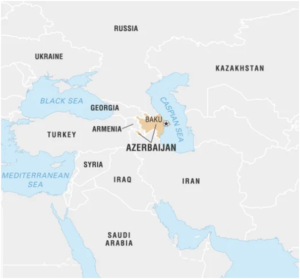IASbaba's Daily Current Affairs Analysis
Archives
(PRELIMS & MAINS Focus)
Syllabus:
- Prelims & Mains – GEOGRAPHY
Context: A western disturbance swept across northern India recently, bringing fresh snowfall to Kashmir and widespread rain to Delhi, Rajasthan, Punjab, and Haryana.
Background: –
- Weather experts note that the western disturbances, earlier predicted, seem to be more intense than expected.

Key takeaways
- A Western Disturbance (WD) is an extra-tropical storm originating in the Mediterranean region, characterized by its movement from west to east. It is carried towards South Asia by the subtropical westerly jet stream.
- Formation and Origin:
- Formed over the Mediterranean Sea, Caspian Sea, or Black Sea.
- Develops as low-pressure systems with associated upper-air cyclonic circulations.
- Movement: Moves eastwards, influenced by the jet stream, entering India through the northwestern regions.
- Seasonality: Primarily active during winter (November to March) but can occasionally occur in other seasons.
- Regions Affected:
- Northwestern India: Punjab, Haryana, Rajasthan, and Western Uttar Pradesh.
- Extends to the Himalayan states: Himachal Pradesh, Uttarakhand, and Jammu & Kashmir.
- Sometimes influences central and eastern India.
Weather Impact:
- Rainfall and Snowfall:
- Causes winter rainfall in the northwestern plains.
- Triggers snowfall in the Himalayan regions, critical for replenishing glaciers and water reserves.
- Temperature Effects:
- Leads to a decrease in daytime temperatures (due to cloud cover and rain).
- Increases nighttime temperatures (acts as a blanket by trapping terrestrial radiation).
- Agricultural Significance: Beneficial for Rabi crops like wheat and mustard due to moisture availability.
- Disruptive Effects: Can lead to flash floods, landslides, and avalanches in mountainous regions.
- Interaction with Local Systems: When WDs interact with moist easterly winds (originating from the Bay of Bengal), they intensify, leading to widespread precipitation.
Source: Financial Express
Syllabus:
- Prelims – ENVIRONMENT
Context: Recent incidents in Telangana have renewed concerns about the smuggling of pangolins, a scaly nocturnal mammal known for its huge demand in the international market. This has prompted renewed vigilance against its illicit trafficking.
Background: –
- The creatures are strictly nocturnal, repelling predators by curling up into scaly spheres upon being alarmed. The same defence mechanism however, makes them slow and easy to catch once spotted.

Key takeaways
- Globally there are eight pangolin species, four each in Africa and Asia. India is home to two species – Indian pangolin Manis crassicaudata and Chinese pangolin Manis pentadactyla.
- Indian pangolins are found in Bangladesh, India, Nepal, Pakistan, and Sri Lanka.
- In India, the species (Indian pangolin) is widely distributed and has been recorded in Andhra Pradesh, Assam, Bihar, Chhattisgarh, Goa, Gujarat, Jharkhand, Karnataka, Madhya Pradesh, Maharashtra, Meghalaya, Odisha, Rajasthan, Tamil Nadu, Uttarakhand, Uttar Pradesh, and West Bengal.
- In India, both Indian pangolins and Chinese pangolins are listed in Schedule I of the Wildlife (Protection) Act, of 1972. Therefore hunting, trade, or any other form of utilisation of the species or their body parts and derivatives is banned.
- Since 2017, all pangolin species have been listed in Appendix I of the Convention on International Trade in Endangered Species (CITES), prohibiting their commercial trade.
- Chinese Pangolin is classified as ‘Critically Endangered’ on the International Union for Conservation of Nature (IUCN) Red List while the Indian Pangolin is classified as ‘Endangered’ on the IUCN Red List.
- They are the only known mammals with large keratin scales covering their skin. They are also toothless.
- These animals are inherently shy and have minimal requirements for sustenance. Their diet primarily consists of ants, termites, and their eggs and larvae. Their sense of smell is extraordinary but vision and hearing are poor.
- Pangolins are the most trafficked mammal in the world—with demand primarily in Asia and in growing amounts in Africa—for their meat and scales. There is also demand in the United States for pangolin products, particularly for their leather to be used in boots, bags, and belts.
- Significance of Pangolins
- Pangolins are “ecosystem engineers” that build burrows that help circulate soil organic matter, increase soil moisture and aeration, and affect plant community succession through their burying behaviour.
- The burrows made by pangolins also get utilised as shelters by other species within their ecosystem.
Source: Indian Express
Syllabus:
- Prelims & Mains – CURRENT EVENT
Context: The contribution to Prime Minister’s Citizen Assistance and Relief in Emergency Situations Fund (PM CARES Fund) fell to Rs 912 crore during the financial year 2022-23, its lowest since the public charitable trust was created in March 2020 following the COVID-19 outbreak.
Background:
- A study of the audited statements on PM CARES Fund website shows that the voluntary contribution peaked at ₹7,184 crore in 2020-21 and then fell to ₹1,938 crore in 2021-22, before declining further in 2022-23 as the Covid threat receded after 2021.
Key takeaways
- The PM CARES Fund was set up on March 28, 2020, as a public charitable trust under the legal framework of the Registration Act, 1908.
- It aims to provide relief during emergencies, including health crises, natural disasters, and other distress situations.
- Trustees:
- The Prime Minister is the Chairperson of the fund. Ex-officio trustees include the Minister of Defence, Minister of Home Affairs, and Minister of Finance.
- The Chairperson of the Board of Trustees (Prime Minister) shall have the power to nominate three trustees to the Board of Trustees who shall be eminent persons in the field of research, health, science, social work, law, public administration and philanthropy. Any person appointed a Trustee shall act in a pro bono capacity.
- Voluntary Contributions:
- The fund accepts voluntary contributions from individuals, organizations, and foreign donors and does not get any budgetary support.
- Donations to the PM CARES Fund qualify for 100% exemption under Section 80G of the Income Tax Act, 1961. They also count as Corporate Social Responsibility (CSR) expenditure under the Companies Act, 2013.
- Foreign Contributions: The fund is exempt under the Foreign Contribution (Regulation) Act (FCRA), allowing it to accept donations from foreign individuals and organizations.
- Administrative Costs: No administrative expenses are deducted; the entire contribution is used for relief efforts.
- Non-Governmental Status: The fund is not considered a “public authority” under the Right to Information (RTI) Act, 2005, sparking debates over transparency and accountability.
Source: Hindustan Times
Syllabus:
- Prelims & Mains – CURRENT EVENT
Context: A sense of unease prevails in two districts along the Siang River in Arunachal Pradesh, as protests intensify against the proposed Siang Upper Multipurpose Project (SUMP).

Background: –
- The government asserts that SUMP is not merely another hydropower initiative but a measure to save the river by mitigating the impacts of China’s dam-building activities upstream in Tibet. According to reports, China has approved the construction of world’s largest hydropower dam on the eastern edge of the Tibetan Plateau near Arunachal Pradesh.
Key takeaways
- The Siang originates near Mount Kailash in Tibet, where it is known as the Yarlung Tsangpo. It traverses over 1,000 km eastward before forming a horseshoe bend around the Namcha Barwa peak and entering Arunachal Pradesh as the Siang.
- Further downstream, in Assam, it joins tributaries like the Dibang and Lohit to become the Brahmaputra.
- SUMP has faced opposition since it was first proposed by the NITI Aayog in 2017.
- While the precise scale of the project will only be ascertained after feasibility surveys, a preliminary report submitted by the National Hydroelectric Power Corporation (NHPC) in December 2022 to the Central Electrical Authority was for an 11,000-MW project with a reservoir capacity of 9 billion cubic metres.
- This makes the project several times larger in scale than other projects currently in the works in the country.
- The three sites earmarked for SUMP are Parong and Dite Dime in Siang district, and Ugeng in Upper Siang district.
- The Adi tribe here revere the Siang as a provider, referring to it as Aane (mother) Siang. Cultivation on its banks was encouraged and facilitated by the state after Independence to move away from shifting cultivation in the hills. So while settled agriculture along the river is 60 years old among the farmers of this belt, they are now completely dependent on it.
Source: Indian Express
Syllabus:
- Prelims – GEOGRAPHY
Context: Russian President Vladimir Putin apologised to his Azerbaijani counterpart for the crash of an Azerbaijani airliner in Kazakhstan that killed 38 people. The plane was flying on December 25th from Azerbaijan’s capital of Baku to Grozny, the regional capital of the Russian republic of Chechnya, when it turned toward Kazakhstan and crashed while making an attempt to land.
Background: –
- In an official statement, Russia said that air defence systems were firing near Grozny on Wednesday due to a Ukrainian drone strike, but stopped short of saying one of these hit the plane.

Key takeaways
- Azerbaijan is a transcontinental country located at the boundary of West Asia and Eastern Europe.
- Location: Bordered by the Caspian Sea to the east, Russia to the north, Georgia to the northwest, Armenia and Turkey to the west, and Iran to the south.
- Capital: Baku, which is also the largest city.
- Terrain: Varied landscapes including lowlands, highlands, and the Caspian Sea
- Azerbaijan was part of the Soviet Union until its independence on August 30, 1991, following the USSR’s dissolution.
- Economic Profile
- Economy: Primarily driven by oil and natural gas resources. The country is a key player in regional energy politics due to its reserves and strategic location.
- Major Pipelines: Baku-Tbilisi-Ceyhan (BTC) pipeline, a significant route for transporting oil to Europe.
- The country is famous for its Mugham music and UNESCO World Heritage Sites, including the Walled City of Baku.
- Geopolitical Importance
- Azerbaijan holds strategic significance due to its location in the South Caucasus, acting as a bridge between Europe and Asia.
- It is a founding member of the Organization of Turkic States and part of the Non-Aligned Movement (NAM).
- The Caspian Sea region makes it critical for energy security and transportation corridors like the Middle Corridor, connecting Europe and China.
- Nagorno-Karabakh Conflict: The region of Nagorno-Karabakh, internationally recognized as part of Azerbaijan, has been a focal point of conflict with Armenia.
Source: The Hindu
Practice MCQs
Q1.) Consider the following statements about the Siang River and Siang Upper Multipurpose Project (SUMP) :
- The Siang River originates in Tibet, where it is known as the Yarlung Tsangpo.
- SUMP aims to address the impacts of dam-building activities by China in Tibet.
- The Adi tribe in the region opposes the project due to its potential impact on their cultural and economic dependence on the river.
Which of the above statements is/are correct?
(a) 1 and 2 only
(b) 1 and 3 only
(c) 2 and 3 only
(d) 1, 2, and 3
Q2.) Which of the following statements is/are correct about Azerbaijan?
- Azerbaijan has no direct access to the open ocean.
- The Baku-Tbilisi-Ceyhan (BTC) pipeline is a key route for transporting oil from Azerbaijan to Europe.
- Azerbaijan is a founding member of the Organization of Turkic States and the Non-Aligned Movement (NAM).
Select the correct answer using the code given below:
(a) 1 and 2 only
(b) 2 and 3 only
(c) 1 and 3 only
(d) 1, 2, and 3
Q3.) Which of the following statements about the PM CARES Fund is/are correct?
- It accepts voluntary contributions from foreign donors.
- Donations to the fund qualify for 50% exemption under Section 80G of the Income Tax Act.
- It is categorized as a “public authority” under the Right to Information (RTI) Act, 2005.
Select the correct answer using the code given below:
(a) 1 and 2 only
(b) 1 only
(c) 2 and 3 only
(d) 1, 2, and 3
Comment the answers to the above questions in the comment section below!!
ANSWERS FOR ’ Today’s – Daily Practice MCQs’ will be updated along with tomorrow’s Daily Current Affairs
ANSWERS FOR 28th December – Daily Practice MCQs
Q.1) – b
Q.2) – b
Q.3) – a













